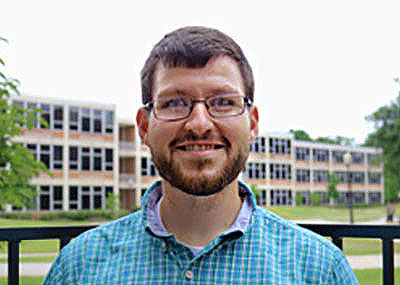Read time:

The birthplace of the atomic bomb may seem like an unconventional summer destination, but for a programmer like Andrew Garmon ’13, it’s exactly where he wants to be. Through the U.S. Department of Energy's (DOE) Science Graduate Research Program (SCGSR), Garmon will spend his summer at the Los Alamos National Lab in New Mexico researching ways to make breakthroughs in disease research and drug development.
At Los Alamos, Garmon, who is currently a PhD student at Clemson University, will work on the Exascale Project, which comprises a group of scientists studying designs and algorithms that will fully leverage the power of future supercomputers. With the new computers, Garmon will be able to predict the trajectories of protein molecules as they interact with one another. By replaying visualizations of these interactions, he can further study the proteins and how they change over time. Understanding these processes in different scenarios can greatly improve research into how protein transformations effect disease control and medicinal drug development.
“I will be working with parallel trajectory splicing, which is a term for harnessing the power of multiple processors at once,” Garmon explains. “The idea is to distribute work among multiple processors to complete a task much faster. If we can develop the programs that can use every processor in a supercomputer to work in tandem, but on separate pieces of information simultaneously, we can study the effects of certain phenomenon in real time.”
Garmon credits much of his success with the SCGSR program to the preparation he gained at CNU. “The Mathematics Department definitely had the greatest impact on me and I am still very close with Dr. Hongwei Chen to this day,” he says. “He was a great mentor to me, and was the first to encourage me to work on problems outside of the courses I was taking.” Garmon took several of Chen’s courses, and they often discussed their shared love of problem solving. “Andrew developed into a very good problem solver,” Chen says. “He is one of the best students I’ve had since I came to Christopher Newport in 1991, and he will do excellent work at Los Alamos.”
With the new supercomputers – which will be able to run as much as 50 times faster than today’s systems and are slated to arrive in Los Alamos by 2022 – Garmon is up for the challenge. “I hope that, by then, I’ll have developed methods to reach simulation times thought to be previously impossible.”